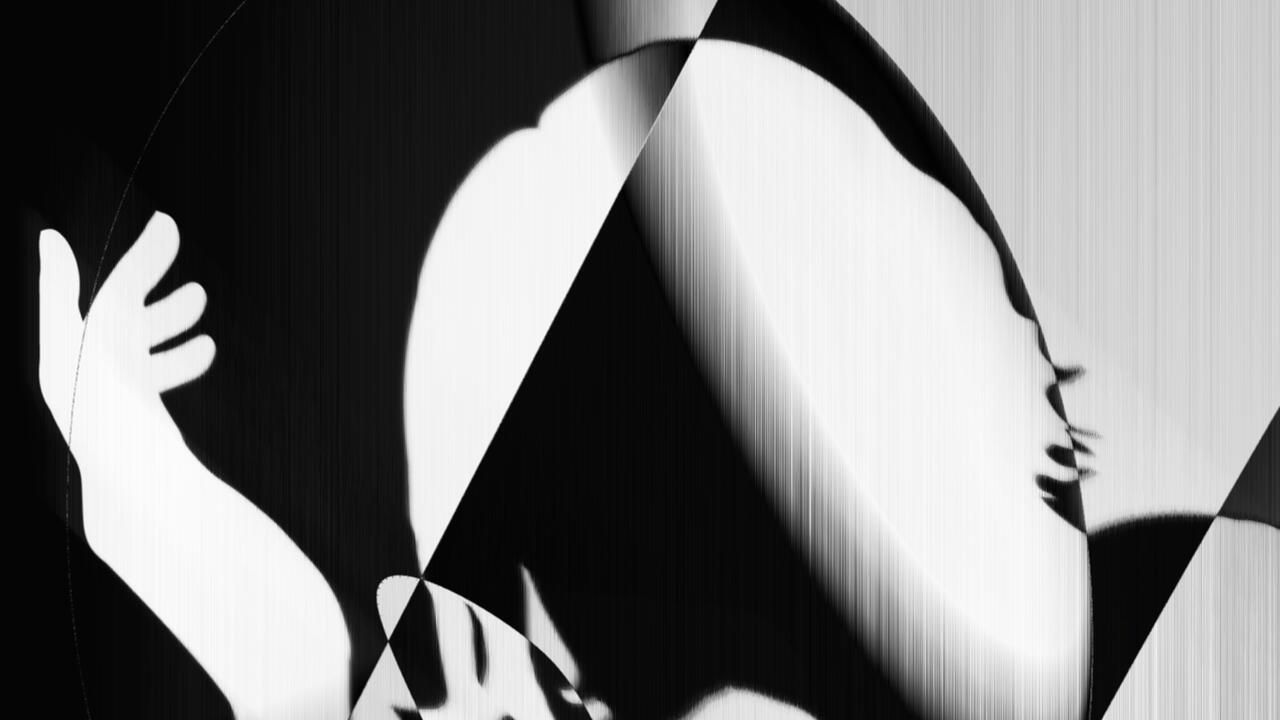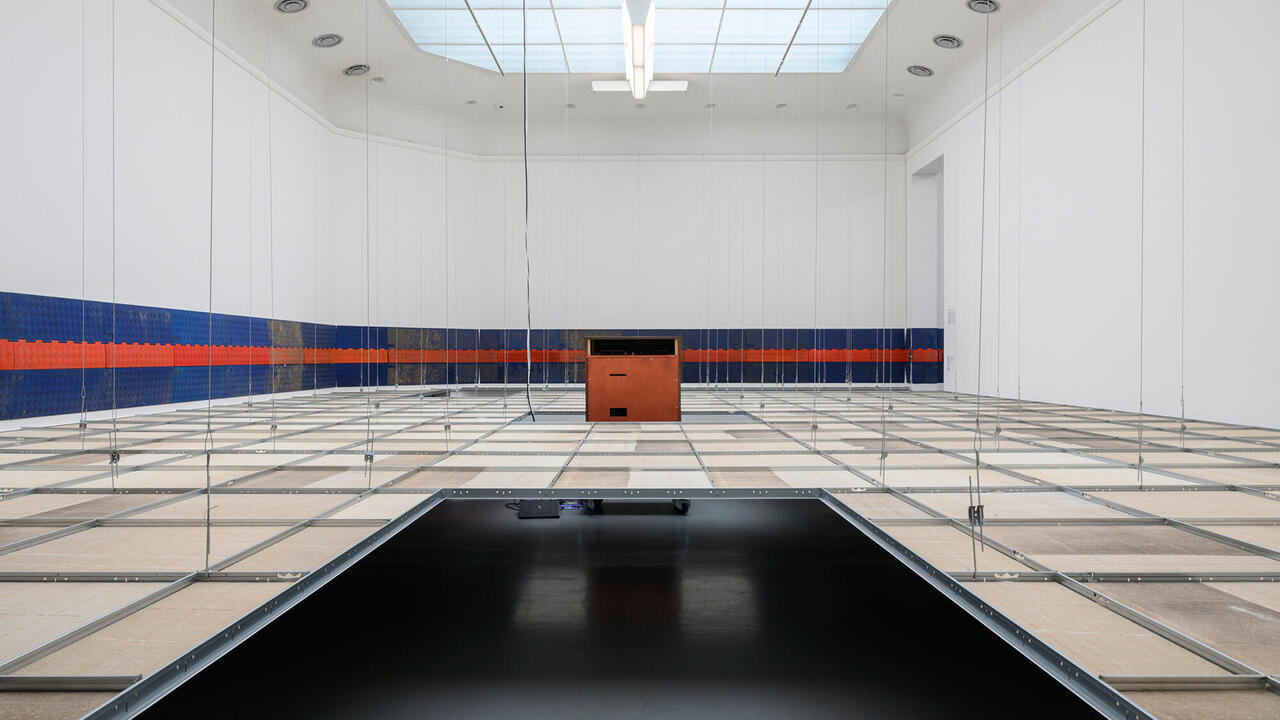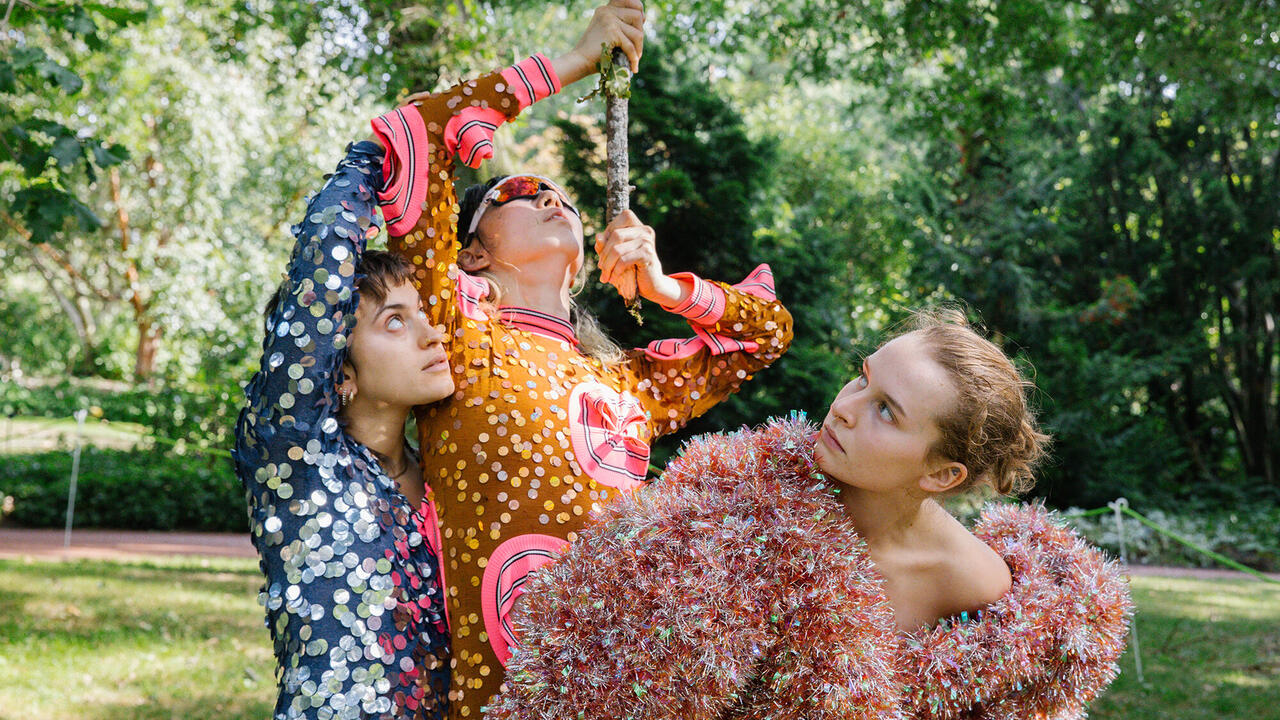Unprimed Time
Martha Jungwirth and five decades of painting. By Jörg Heiser with a statement by Albert Oehlen and a piece by Austrian poet Friederike Mayröcker
Martha Jungwirth and five decades of painting. By Jörg Heiser with a statement by Albert Oehlen and a piece by Austrian poet Friederike Mayröcker

Pieces of cardboard lie stacked up, like discarded packaging material enjoying a second lease of life. These are animated by free constellations of colour that seem random and chaotic at first, but which give way to figures and spaces made by assured and compelling movements. At Martha Jungwirth’s studio in Vienna’s fourth district, these are not the only things that appear at first chaotic, then compelling. There are also the piles of crumpled oil tubes, covered with a film of violet-red paint – the dominant value in the artist’s colour spectrum if assessed simply by these traces of her enduring practice. The pieces of cardboard are not found materials salvaged from the trash, but ordered from a company in rural Austria, and selected on account of their beige-grey tone and surface quality.
We go through the stacks that look like sets of outsize playing cards and I try to grasp the elastic rules of the game. Which are from the ’80s? What’s from today? Where does figuration play a central role and where is it just the starting point for a free and nimble organization of the picture plane? Everything is easy and accomplished, elastic in terms of both time and space yet still very concrete. If anything looks at all ‘abstract’ then it is in the sense that lines and patches are not subordinate to immediate recognizability. This working method is, in part at least, facilitated by the combination of (thinned) oils and cardboard. The relatively smooth, not especially absorbent surface does not require priming to arrive at swiftly flowing strokes.
One might say that Jungwirth took the same approach in life, not priming her career with the usual art world precautions. No safeguards via diligent networking and discursive manoeuvres, no lengthy professorship. Over the decades, she has pursued her work as a painter all the more resolutely, strikingly immune to trends of minimalist discreteness (of the 1970s and 2000s) or the maximalist stridency of the ’80s. Early in her career (if it is possible to speak of a ‘career’ when the person in question has long operated under the radar of canonization), in the 1960s, she was part of a group called ‘Wirklichkeiten’ (Realities) that was not actually a group (here too, then: unprimed socialization). For an exhibition at the Secession in May 1968, art critic Otto Breicha combined six painters who had little in common in artistic terms except that they did not follow the school of fantastic realism then still dominant in Vienna and that they brought a certain pop attitude to bear, without really being Pop: from Jungwirth’s drawings and watercolours of the time that could resemble informal, deconstructive variations on Richard Lindner’s grotesque style of Pop, to the group photograph of them looking like a cross between The Beatles and a bunch of Greenwich Village beatniks. This was the first ever exhibition of Kurt Kocherscheidt, for example, (he died in 1992 and his work, too, has recently been rediscovered – see the review in this issue). And by 1967, Jungwirth had only ever shown her works at Griechenbeisl, a long-established restaurant, rather than in a gallery.

In 1969 she married Alfred Schmeller, the longstanding director of the Museum of the 20th Century (20er Haus), and from then on, until his death in 1990, one can easily – sadly – imagine how Jungwirth must have been denigrated, at least in the baser forms of society gossip, to the status of the director’s wife ‘who also does a bit of painting’. Today, Jungwirth keeps some dry wit in reserve regarding the attitude of her fellow Viennese painters. ‘Their own business, and only their business, always came first,’ she says, before going on, with a dramatic pause: ‘until they finally said, “well, she can paint after all.”’ As a result of the relative invisibility of Jungwirth’s work caused by this crass mis-apprehension (internationally at least), I am probably not the only one to have been introduced to it by Albert Oehlen. In 2010, he curated a show at the Essl Museum in Klosterneuburg near Vienna. With Oehlen, one can always expect surprises, obscure connections and connoisseurship – but when he pulled Jungwirth’s work from the collection’s vaults, it was not just some flirtatious reference: an entire room with large-scale paintings from several decades revealed his sincere enthusiasm.
These works touched on something deeper, something fundamentally connected with the strange life passion of applying paint to canvas – not just with the end result of a semiotically striking picture, but at least as much, if not more, with the process of painting itself. What Oehlen had discovered was an as yet unresolved strand in his own painterly genealogy. This strand leads (ignoring misleading detours via the Neue Wilde and the neo-Expressionism of the 1980s) straight from the late 1950s to the current debate on the possibility and impossibility of ‘free’ abstract painting. ‘Free’ in the sense that it is not the execution of a reductive programme, nor subject to any diktat of expression (increased intensity and provocation with each new picture), but developing instead as an interplay, kept as open as possible, among sensory perception, physical motion and reaction to material. Perhaps this approach is best compared with what happens in experimental electronic music when clouds of powerful noises and gentle melodic particles gradually become the rhythm of the piece as the sound material develops a will of its own.

For Oehlen’s clever, funny pictures, the genealogical line leads to Sigmar Polke, but also to his immediate associates Werner Büttner and Martin Kippenberger; his attempts at grotesque and ‘primitive’ exaggerations of figuration might go back to Georg Baselitz, Markus Lüpertz and Francis Picabia. But for the abstract line-spot-plane pictures he made from the late 1980s on, any direct reference to European Informel or American Abstract Expressionism comes across as rather strained. Looking back, it is Martha Jungwirth who provides the missing link: she occupies a unique position in that she has worked unswervingly for half a century on a project that combines a single strand of Abstract Expressionism in America, exemplified by the work of Joan Mitchell, and a single strand within European Informel, exemplified by the approach of someone like Asger Jorn. Mitchell confidently avoided anything muddy and managed to create a fine, astonishingly unburdened tissue of accented colour, lines and often detailed composite planes – a highly intelligent American lightness that resorts neither to traumatological pathos nor to gestures fraught with meaning. Jorn, on the other hand, derived energy precisely from the raw and the heavy by successfully resisting the choice between ‘beautiful’ freshness and ‘ugly’ muddiness of colour; as well as the choice between the strict eschewal and the strict necessity of classical painting genres (portrait, landscape, still life, etc.). At the same time Jorn repeatedly mocked accomplishment and beauty with crooked bodies and stupid faces. Jungwirth moves between the poles of Mitchell’s elegance and Jorn’s comedy (although specifically Austrian factors must also be taken into account, including the early Arnulf Rainer): leaning towards Mitchell’s fine tissues and freshness of colour, and towards Jorn’s pleasure in rawness and deliberate failure. And this in turn was what enabled Oehlen to connect with this genealogy, without having to stand too deep in the shadow of such towering figures as Mitchell or Jorn. At this point, it may be useful to hear Oehlen himself speak about his position with regard to Jungwirth.
What position does Jungwirth occupy in your personal art historical canon as a painter?
ALBERT OEHLEN I’m not entitled to pass historical judgement on Jungwirth’s position. I’m utterly unqualified for that. She caught my attention among a group of male artists, clearly surpassing them all in terms of quality. But she is also the least well known. Which suggests that in this particular case, her gender played a role. This kind of painting is viewed as a male domain and Joan Mitchell has only been getting the recognition she deserves for the last five years or so.
How does Jungwirth’s painting relate to the orthodoxy of the Informel, what sets her apart from her forebears?
AO Her painting is just especially good. I don’t think it’s true that every artist has to invent something. After all, every single picture is an invention. Philip Guston came to abstract painting with a delay of seven years and his pictures were the least original.vBut now one can see that, alongside those of Willem de Kooning, they are the best.
What makes Jungwirth’s work interesting?
AO The fact that she has the courage to work on something that is far from finalized. The ghastly habit of thinking in ‘positions’ that should be adopted by every artist, and that ideally should be adopted once only, prevents concentration on things. Now, new painters are emerging with a renewed focus on abstract painting, so things are getting interesting again – someone branded a latecomer can take on a whole new significance.

It would be wrong to pretend that my interest in Jungwirth arose without the Oehlen connection, by pure coincidence or due to great connoisseurship. But in the long term, this connection alone does not do the artist justice. I freely admit that if I had seen just two or three of her pictures, and not whole series as in the shows at Klosterneuburg and then in the spring of 2013 at Galerie Cinzia Friedlaender in Berlin, I probably would not have fully appreciated their qualities. In Klosterneuburg, the work in question was the series of large-format watercolours Spittelauer Lände (1993); in Berlin, it was the oil-on-cardboard pictures from the late 1980s.
‘Spittelauer Lände’ is simply the address of the house in Vienna where the pictures in the series were painted in May and June of 1993, while looking out from a window on the fifth floor over a busy traffic intersection beside the Danube Canal. In and of itself, ‘capturing’ the bustle of a city from a window is not an unusual or risky undertaking for a painter. What makes these works interesting is the way the urban architecture itself seems to become movement. In eight of the 20 pictures in the series, we see a dark volume crowned by circling lines, always in the upper half of the frame. In all eight pictures, relatively precise vertical lines of colour (drips of paint drawn down by gravity) run towards the lower edge of the picture, as if part of the picture is being fenced off. As an inhabitant of Vienna – or a user of Google maps – one soon realizes that one building dominates the line of sight from Spittelauer Lände: a World War II anti-aircraft tower in the nearby Augarten park. And the horizontal squiggles at the top end of the volume in Jungwirth’s pictures are the characteristic semicircular ‘balconies’ from which anti-aircraft gunners once fired into the sky. In spite of this, one is left with the impression that a wartime building with indestructible meters-thick concrete walls, still sitting in the midst of the cityscape, is set in motion by the fleet-footed medium of watercolour, made to spin and quake. The matter-of-fact detail of this location and the resulting identification of the motif leads to a sudden realization: patches of colour can be read as shorthand for cars and curving lines as traces of buildings. This, then, is the phenomenological aspect of Jungwirth’s painting: a literally impressionistic approach that aims for an almost automatic, Aikido-like transformation of sensory input into marks, without the laboured justification of spiritual depth or high sophistication.

With a different technique and subject, the oil-on-cardboard pictures mounted on canvas from the 1980s shown in Berlin do something very similar. Jungwirth mostly works on several pictures in a series, lined up parallel on a table, laid out flat, only standing them up where necessary – for example when an unruly curl needed scratching into a mop of black hair, a gesture that would certainly have been less forcefully executed in the horizontal (Weinwolf, Wine Wolf, 1988). That quick scratch is so unerring that one is reminded of the nickname Jungwirth and her husband Schmeller jokingly agreed on in the 1960s when, while visiting exhibitions together, she would always say that she, too, would paint the kind of work on show, and make a better job of it. The moniker was Rosita Desmoliano, not a duchess from some old Andalusian dynasty, but Viennese dialect for ‘I’ll paint that too’ (Des mol i a no). This must be more or less what she was thinking, albeit with great admiration, when, at the Museum of Modern Art in New York in 1975, she saw seven of Mies van der Rohe’s charcoal drawings of imaginary architecture projects, including the Glass Skyscraper (1922). The series entitled Indesit, Jungwirth’s contribution to documenta 6 in 1977, was inspired by Van der Rohe’s confidently freehand treatment of spatial constellations – but translated into a Pop motif and an Informel painterly process: Indesit is the mythological-sounding name of an Italian brand of dishwashers, an ordinary everyday object serialized here in diversely quivering forms. The inanimate construction is literally deconstructed and thus animated. Which, after all, seems a central impetus for Jungwirth even today.
Translated by Nicholas Grindell

















